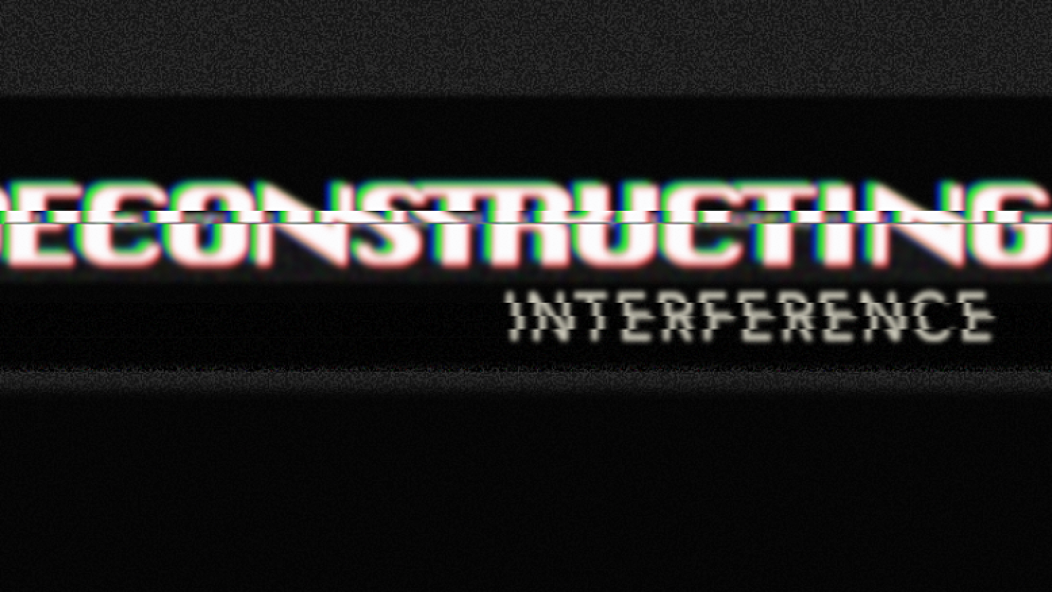
Deconstructing Interference #13

…
This is Deconstructing Interference, the roundup dealing with all the non-metal and experimental stuff that I find interesting. If you want to be considered for this column or have anything else to recommend, drop me an e-mail at [email protected].
…
Desertion Trio – Midtown Tilt
Two years ago, Nick Millevoi released Desertion, a record which found him diving into an old-school blues aesthetic, mutating it with his forward-thinking and experimental outlook. This quest for transforming standardised forms of blues, country and surf rock is now expanded, with Kevin Shea and Johnny Deblase joining Millevoi and forming the Desertion Trio. The band’s first record carries down the same path that Desertion explored, seeing the trio taking on jazz notions, desert rock passages, noise rock aggression and free-rock improv tactics. All these elements are passed through the band’s kaleidoscopic vision of rock music, presenting an extravagant result in their debut album, Midtown Tilt.
…
…
Chino Amobi – Paradiso
Known as the co-founder of NON, an excellent underground label/collective releasing music from African artists and African diaspora, Chino Amobi’s debut album, Paradiso, is an ambitious work. Influenced by Dante’s Divine Comedy, Chino Amobi finds a number of narrating “Virgils” in his label’s collaborators to guide him through this surreal journey. Tribal rhythms and percussion, spoken word narration and harsh noise paint with precision this new inferno. The use of the term Paradiso at first feels out of context, as the record feels closer to Dante’s first exploration, Inferno, but despite the brutal collage of sound, there appears to be a sense of spiritual elation even within the current state of reality. Underneath all the unpleasantness, the brutality and dystopia, Amobi presents a glimpse of hope, making Paradiso not a reality, but a state of mind.
…
…
Kaitlyn Aurelia Smith – The Kid
Stellar electronic music producer Kaitlyn Aurelia Smith explores the different stages of the human life in her latest work The Kid. Through the connected parts of the record, the progression from one phase of the human life to the next is illustrated. In a similar fashion, The Kid finds Smith at a pivotal point of her career. This is a mature album, where Smith presents a more direct and straightforward offering than her previous record Ears. The progression does not display the same hectic activity, while the plethora of crafted sounds has given way to a more minimal representation. It is all combined beautifully, creating a cohesive narrative through the use of the trademark sound of the Buchlas 100 Series Synthesizer and the legendary EMS Synthi 100, which present a rich array of sonic textures.
…
…
Rabit – Les Fleurs du Mal
If you thought that the work of Rabit had reached its most extreme with Communion, then it is time to brace yourself. Les Fleurs du Mal, named after the poetry work of Charles Baudelaire, finds Rabit at his most dystopian and unconventional. Rabit always displayed an interest for reconfiguring core notions of electronic music, both in terms of atmosphere but also of rhythm. Communion found him at a point where rhythm was an element that bent to the artist’s will, but Les Fleurs du Mal appears to completely unravel it. This is a work that leaves behind the cold industrial touch and the grime breakbeat complexity, and instead moves into the abstract domain. Not unlike the nihilistic outlook of the record’s namesake, Rabit makes a similar move. While melody and lyrics were absent from his music before, here he also pushes rhythm further into the background, exploring a further stage of electronic music deconstruction. The result feels like an experiment in solitary confinement, where time expands and retracts in a non-linear fashion, leaving the listener disoriented.
…
…
Circuit des Yeux – Reaching for Indigo
Circuit des Yeux has been experimenting with the various sides of folk music aesthetics since day. Starting off with a lo-fi experimental take on folk music, the descent into the more abstract territory was completed with Haley Fohr’s third album Portrait. Since then, Circuit des Yeux begun to further explore rock notions, be it in the punk-ish attitude of Overdue or the psychedelic alchemy of In Plain Speech. Reaching for Indigo sees Fohr making a return for the traditional folk structures, based around a thick ambiance and a melancholic leaning, presenting these through her off-kilter use of an expanded instrumentation. Organ, trombones, autoharp and synthesizers along with piano and strings accompany Fohr’s acoustic guitar and vocals. Through simpler structures, derived from a stripped down ideal of folk music, Fohr presents her most sentimental and direct record.
…
…
Rainforest Spiritual Enslavement – Ambient Black Magic
Dominick Fernow’s (Prurient, Vatican Shadow) Rainforest Spiritual Enslavement finds the prolific solo artist moving eagerly toward the atmospheric edge of abstract techno. Considering his recent releases in the power electronics teratogenesis of Rainbow Mirror, and the darker techno industrial Media in the Service of Terror, Ambient Black Magic presents a more reclusive and immersive experience. Through long-form tracks, Fernow dives into an empty expanse, projecting his observations through minimal beats, droning synthesizers, and hypnotic grooves. Less extreme than the harsh techno periods of Prurient, more abstract than Vatican Shadow, but equally absorbing and mesmerizing as any of his other works.
…
…
Chris Carter – Chemistry Lessons Volume 1
One of the legends of electronic music, Chris Carter came into prominence as a member of the legendary Throbbing Gristle. Through all of his work, Carter has influenced many aspects of electronic music through the years, from the harsh industrial precision and the experimental outlook of Throbbing Gristle-esque no-wave to the more straightforward and synthpop moments of Chris & Cosey. His solo releases, sparse as they might have been, have helped shape the adventurous edge of industrial music (The Space Between<em>) as well as the ambient and IDM scenes (Small Moon). In this new record, Carter presents a more ambitious scope, unleashing an overarching record that includes a wide range of diverse sounds, from straightforward dance progressions to no-wave experimental aesthetics. Chemistry Lessons Volume 1 becomes a lecture on the essence of synthesized music, and one of Carter’s crowning achievements.
…
…
YoshimiO, Susie Ibarra, Robert Aiki Aubrey Lowe – Flower of Sulphur
Three great musical minds meet to create a work of expressive freedom and improvisation. YoshimiO, member of Japanese noise rock giants Boredoms and improvisational virtuosos Saicobab, meets with percussionist Susie Ibarra, an artist moulded in the tradition of the Sun Ra Arkestra, and experimental sonic artist Robert Aiki Aubrey Lowe (Lichens), known from his collaborations with Twilight and most recently as a member of drone/doom overlords Om. Flower of Sulphur is the result of these experimental spirits, with YoshimiO, Ibarra and Lowe presenting a work of free jazz haze and rhythmic temperament. In the process the heritage that each member carries become part of this melting pot, resulting in a cohesive work of the highest avantgarde standard.
…
…
Christina Vantzou – No. 4
Probably best known from her time as part of The Dead Texan, Christina Vantzou has since blossomed to an intriguing ambient minimalist producer. Through her solo works, she explores the ambient spaces between drones and the emotive messages that minimal music can pass. No. 4 feels like her most complete work, featuring fellow experimental label Kranky Records artists John Also Bennett (Forma), Steve Hauschildt, Angel Deradoorian, Clarice Jensen, and Beatrijs De Kierck. No. 4 sees Vantzou diving further into this dream rift she has been exploring. Citing sleep and the “loosening of time” as the main creative ideas behind the new album, Vantzou presents the hallucinatory properties of her music.
…
…











